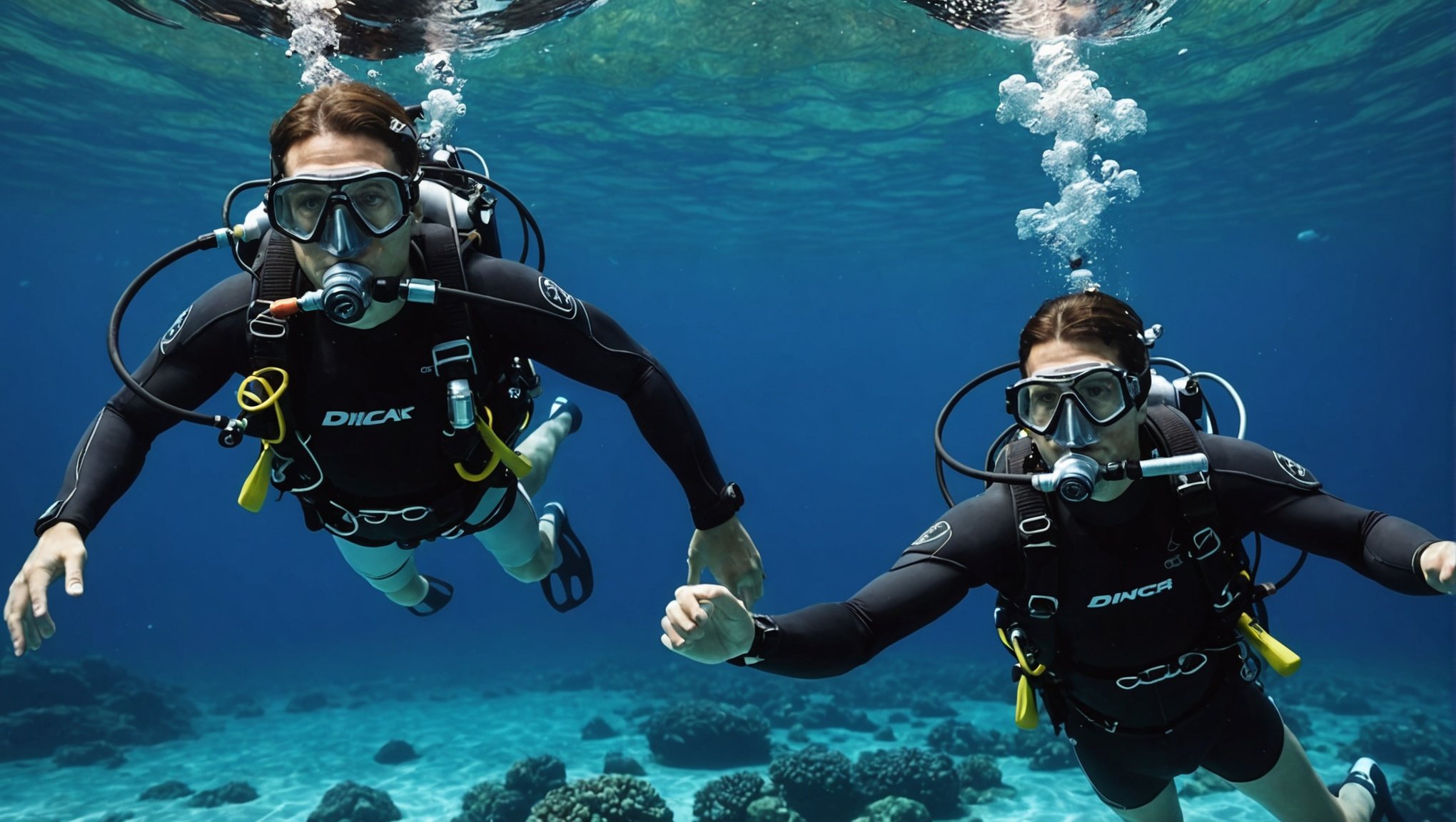Transforming Diving Simulations: Unleashing AI for Hyper-Realistic Underwater Physics
The Challenge of Underwater Simulations
Simulating underwater environments is a complex and computationally intensive task, especially when it comes to accurately modeling the behavior of fluids and the interactions between objects in these environments. Traditional methods of computational fluid dynamics (CFD) often require significant computational resources and time, making real-time simulations a daunting challenge. However, with the advent of artificial intelligence (AI) and machine learning (ML), the landscape of underwater simulations is undergoing a revolutionary transformation.
The Role of Machine Learning in Fluid Dynamics
Machine learning is playing a pivotal role in transforming the field of fluid dynamics by offering more efficient and accurate ways to simulate complex flow problems. One of the promising ML approaches involves the use of Fourier neural operators (FNOs), which can learn resolution-invariant solution operators. This means that FNOs can be trained on low-resolution data and then integrated into high-fidelity numerical simulations, significantly reducing computational costs.
Also read : Enhancing Escape Room Experiences: Utilizing AI to Tailor Puzzle Difficulty in Real-Time
Key Benefits of FNOs in Fluid Dynamics
- Reduced Computational Costs: By using FNOs, researchers can achieve significant speedups in simulations, halving the computational time compared to traditional methods.
- Stability and Accuracy: Hybrid simulations that alternate between FNOs and traditional numerical methods (like Lattice Boltzmann Methods) maintain stability and improve overall efficiency.
- Real-World Applications: FNOs can be applied to various complex flow problems, such as the dynamic evolution of the Kármán Vortex Street and steady-state flow through porous media.
Universal Physics Transformers: A Unified Approach
Another significant advancement in the field is the introduction of Universal Physics Transformers (UPTs). UPTs offer a unified and efficient neural operator learning paradigm that can scale across a wide range of spatio-temporal problems. Unlike traditional neural operators that are often problem-specific, UPTs operate without grid- or particle-based latent structures, making them highly flexible and scalable.
How UPTs Work
- Latent Space Representation: UPTs encode different grids or particles into a compressed latent space representation, facilitating fast simulated trajectories.
- Inverse Encoding and Decoding: These techniques ensure that the latent space rollouts are accurate and efficient.
- Generalization Capabilities: UPTs can generalize across different phenomena, boundary conditions, and PDE coefficients, making them versatile tools for various simulations.
Practical Applications in Underwater Simulations
The integration of AI and ML in underwater simulations has numerous practical applications, from designing more efficient underwater vehicles to predicting ocean currents and climate change impacts.
This might interest you : Maximizing Fun: How Developers Can Enhance Crafting Systems in Survival Games with Real-World Physics
Designing Underwater Vehicles
- Optimized Performance: AI-driven simulations can help in optimizing the design of underwater vehicles by simulating various flow conditions and material interactions.
- Real-Time Feedback: Real-time simulations enable engineers to receive immediate feedback on design changes, accelerating the development process.
Predicting Ocean Currents
- Climate Change Modeling: AI models can predict ocean currents and their changes due to climate change, helping in environmental monitoring and conservation efforts.
- Resource Allocation: Accurate predictions of ocean currents can aid in resource allocation for marine conservation and fisheries management.
Case Study: Hybrid Simulations in Fluid Dynamics
A recent study by the Technical University of Munich (TUM) demonstrates the effectiveness of hybrid simulations in fluid dynamics. The team used FNOs to simulate the dynamic evolution of the Kármán Vortex Street and the steady-state flow through porous media.
Key Findings
- Stability and Efficiency: Hybrid simulations that alternated between FNOs and Lattice Boltzmann Methods (LBM) showed stable results and significant reductions in computational time.
- Visual Comparison: A visual comparison between flows simulated solely by FNOs and those using hybrid simulations highlighted the improvements in long-time predictions.
Table: Comparison of ML Models in Fluid Dynamics
| Model | Key Features | Applications | Advantages |
|---|---|---|---|
| Fourier Neural Operators (FNOs) | Learn resolution-invariant solution operators | Dynamic evolution of Kármán Vortex Street, steady-state flow through porous media | Reduced computational costs, stable and accurate results |
| Universal Physics Transformers (UPTs) | Unified neural operator learning paradigm, latent space representation | Mesh-based fluid simulations, steady-state Reynolds averaged Navier-Stokes simulations | Flexible and scalable, generalization across phenomena |
| Convolutional Neural Networks (CNNs) | Spatial hierarchies of features | Predicting scour depth around submerged weirs | High accuracy, robust to different data sampling techniques |
Future Directions and Implications
The integration of AI and ML in underwater simulations is not just a technological advancement but also a step towards more sustainable and efficient use of resources.
Enhancing Decision Making
- High-Quality Data: AI-driven simulations provide high-quality data that can enhance decision making in various fields, from marine engineering to environmental science.
- Real-Time Insights: Real-time simulations offer immediate insights, allowing for quicker and more informed decisions.
Addressing Climate Change
- Predictive Models: AI models can predict the impacts of climate change on ocean currents and marine ecosystems, helping in mitigation and adaptation strategies.
- Resource Management: Accurate predictions can aid in better resource management, ensuring sustainable use of marine resources.
The transformation of diving simulations through AI and ML is a significant leap forward in the field of fluid dynamics and underwater physics. With the ability to simulate complex flow problems efficiently and accurately, researchers and engineers can now tackle challenges that were previously computationally prohibitive.
Quotes from Experts
- “The successful application of FNOs to these test cases highlights the potential for machine learning to revolutionize fluid dynamical simulations and other complex engineering problems,” said a researcher from TUM.
- “UPTs demonstrate the beneficial scaling-behavior of transformer backbone architectures, making them highly flexible and scalable,” noted the authors of the UPT study.
As we move forward, the integration of AI and ML in underwater simulations will continue to open new avenues for research, innovation, and practical applications, paving the way for a future where simulations are not just tools but integral parts of our decision-making processes.
Practical Insights and Actionable Advice
For those looking to leverage AI and ML in their underwater simulation projects, here are some practical insights and actionable advice:
Start with Hybrid Models
- Begin by integrating ML models into traditional numerical methods to achieve stability and efficiency.
- Use FNOs or UPTs to reduce computational costs and improve accuracy.
Utilize Advanced Hardware
- Leverage GPU-optimized utilities and models, such as those provided by NVIDIA, to enhance computational efficiency.
- Consider multi-GPU setups for scaling up simulations.
Focus on Data Quality
- Ensure that your datasets are high-quality and relevant to the problem you are trying to solve.
- Use techniques like Hyperband and Bayesian optimization to fine-tune your models.
By embracing these advancements and best practices, you can unlock the full potential of AI-driven underwater simulations, leading to more efficient designs, improved performance, and accelerated innovation in the field.












